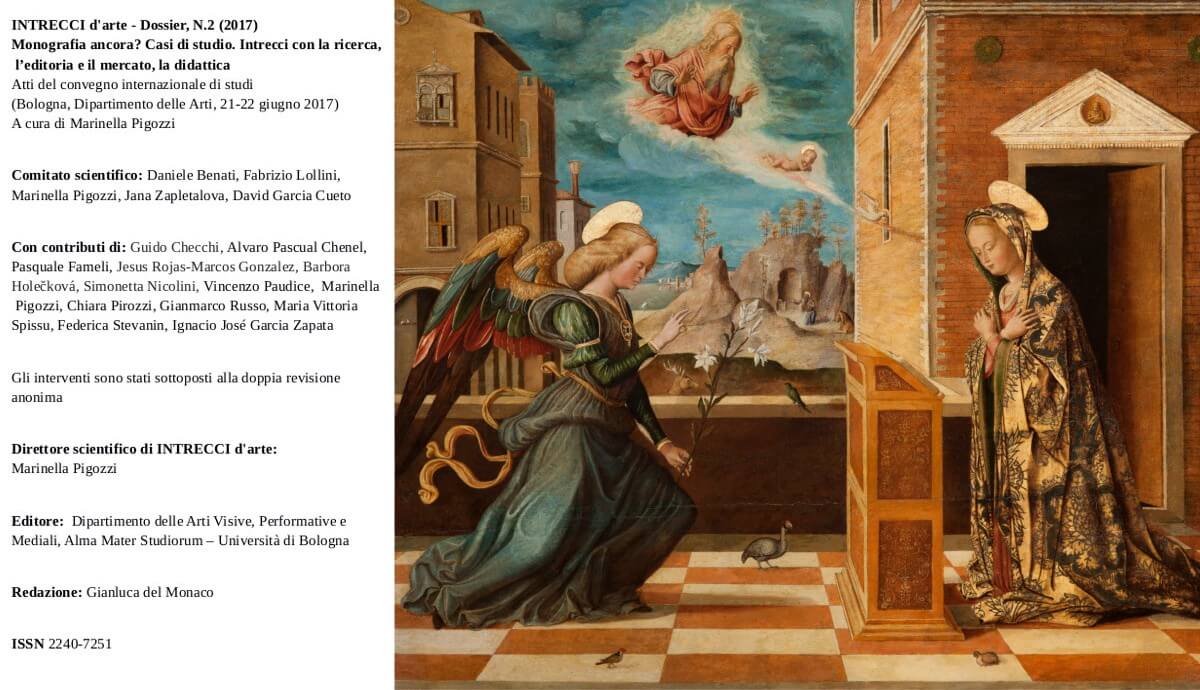Triangular (and alternative) connections from Mediterranean Renaissance to Southern Raphaelism. Koiné-effect, frontier-artists, and longshore protagonists
DOI:
https://doi.org/10.6092/issn.2240-7251/7541Keywords:
Renaissance, Mediterranean, Peripheral, Flemish-Iberian, Southern RaphaelismAbstract
This paper means to shed light on how a whole artistic production labelled as ‘peripheral’ has so far escaped the scope of monographic writing.
Phenomena and factors such as the Mediterranean melting pot and the diffusion of the Flemish-Iberian taste—as well as the arising in early 16th century Naples of an ‘off-branch’ Raphaelism—have, in time, been explored by panoramic studies. Starting from fundamental texts such as those by Bologna, Previtali and Leone de Castris, the paper arrives at the important catalogues by Natale and Borchert, and at the more recent writings of Martens and Naldi. We will see that the apt and fruitful perspective that gives full consideration to the Mediterranean circulation of ideas, stylistic features, and artists—and to some itinerant painters, in Elsig's writings—has yet not set off any conspicuous publishing of monographs (with very few exceptions). So that many of the subtler and interesting interpreters of Mediterranean Renaissance and Southern Renaissance are still uncovered by highly specialised studies and by right-to-the-point, up-to-date corpus reconstructions, which are left fragmentary and/or contradictory, with wavering and questionable attributions.
Such kind of interpreters are Andrea Sabatini, or the Polidoresque Marco Cardisco and his neighbours, just to mention a few names. Or the valuable and significative production of Pietro and Michele Cavaro; or yet further in the past, the production of Antoine de Lohny, of the Master of the Bolea Altarpiece, of the Master of Castelsardo. They all deserve an earnest and renewed interest for their peculiar significance, as mediators and alternatives, even though many years have passed since the well-known essay on ‘centre and periphery’ by Castelnuovo and Ginzburg. But all the more today, during a lively scholarly season when many resources are rightly invested in projects like Mediterranean Studies, Connecting Art Histories, and Transregionale Studien.
Downloads
Published
How to Cite
Issue
Section
License
Copyright (c) 2017 Maria Vittoria Spissu
The copyrights of all the texts on this journal belong to the respective authors without restrictions.
This journal is licensed under a Creative Commons Attribution 4.0 International License (full legal code).
See also our Open Access Policy.
Images and photographs may have different terms of license.
In making material available online the Journal acts in good faith. Parties who have questions or who wish to contest the use of specific works may contact the Editor in chief.
Metadata
All the metadata of the published material is released in the public domain and may be used by anyone free of charge. This includes references.
Metadata — including references — may be re-used in any medium without prior permission for both not-for-profit and for-profit purposes. We kindly ask users to provide a link to the original metadata record.






